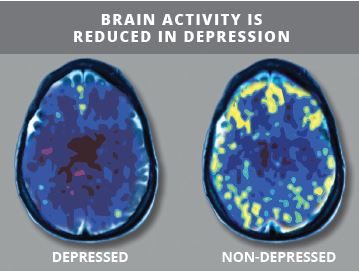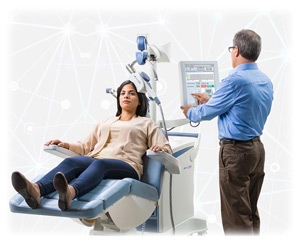What is TMS / NeuroStar Advanced Therapy?
Transcranial Magnetic Stimulation (TMS) is a safe, effective, non-invasive procedure for those suffering from major depression who have not had satisfactory results from antidepressant medication or do not want to deal with the unwanted side effects. With more than 5 million treatments performed to date, NeuroStar Advanced Therapy is a proven treatment to help achieve remission and is bringing hope to people every day.
How Does NeuroStar TMS Therapy Work?
TMS works by applying magnetic pulses to areas of the brain responsible for mood. These magnetic pulses are the same type and strength as those produced by a magnetic resonance imaging (MRI) machine. This magnetic energy changes activity of mood regulating circuits and increases neuroplasticity — that is, the ability of the brain to form new connections among nerve cells. Activating these cells also releases neurotransmitters such as serotonin, norepinephrine, and dopamine, similar to the effects of antidepressant medications. All of these changes can reset the mood regulating mechanisms of the brain, leading to recovery from depression.

What to Expect during a NeuroStar Advanced Therapy Treatment
TMS is performed under the supervision of a specially-trained psychiatrist. During a TMS session, a patient sits in a chair similar to a dentists chair while an electromagnetic coil is placed against their head. This coil is controlled by a computer and generates short bursts of magnetic pulses targeted at the prefrontal cortex (the area of the brain that regulates mood). These pulses produce small electrical currents that activate neurons in the brain. These currents are very small and cannot be felt by the patient. These electrical currents are thought to release neurotransmitters (naturally produced substances that can help with mood regulation).
Each session takes about 19 minutes. TMS is non-invasive, meaning it does not involve surgery, the insertion of any intravenous lines or anything else put into your body. In addition, it does not require any anesthesia or sedation. The patient remains awake and alert during the procedure and may go home shortly after the therapy session.
The number of treatments recommended is based on the individual patient's need and response to the treatment. For most patients, treatment is administered five days per week and they will receive 36 treatments.

